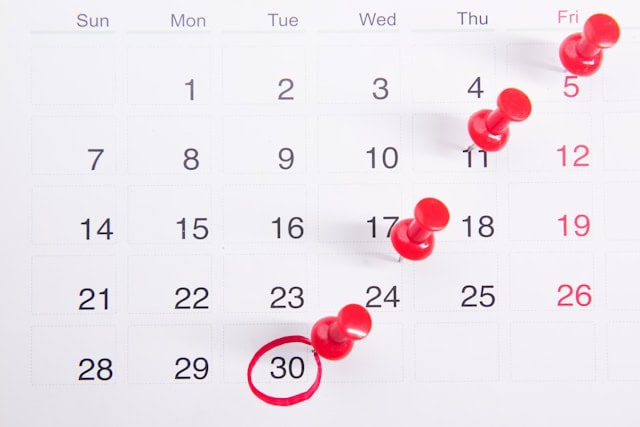Writing a multitude of blog posts is good, getting them published in logical order is better. To get to the next step, need you an editorial calendar, a feature of every successful blog (Russell 2012), which acts as a road map, and compass for your blog’s content creation.
Why You Need an Editorial Calendar

Going beyond remembering to publish, an editorial calendar is a strategic tool that you can use to have the right posts come out in the correct order and proper time. Below are some of the benefits of having an editorial calendar.
- Consistency is King: Successful blogs have consistency (Teson 2018). When you publish posts on a regular schedule, readers become conditioned to it, and know when to come to the blog to see fresh content. Having an editorial calendar guarantees sustainability of the blog (Rauh and McReynolds 2016) and maps out a stream of fresh and re-conditioned content keeping your audience coming back for more.
- No More Last-Minute Scrambles/Deadlines: Imagine staring at a blank page/screen the day before, or worse, the day of a deadline. These are the posts that tend to have the most grammaticals, spelling errors, and consternation. However, a calendar can help prevent this from happening. With an editorial calendar, content can be planned in advance, giving you time to brainstorm ideas, conduct research, write high-quality content and edit posts. In short, an editorial calendar can allow you to focus on creating your best work, rather than trying to rush.
- Organization is Your Superpower: Creating content is a series of steps, starting with reasearch, both content and keyword, writing, working with images, editing, and promotion of the post. An editorial calendar allows all steps to be visualized, timed, and allows for each stage to be tracked. Being able to see the process and your progress, ensures a smooth workflow and prevents tasks from falling through the cracks.
- You can Accomplish Goals Easier: Every blogger should have goals such as increasing their brand awareness, driving traffic, or generating leads. An editorial calendar helps your content align with these goals.
- Data-Driven Decisions: Having a steady stream of posts allows you to track the performance of your content with website analytics. Analytics, when coupled with a calendar, can show how posts have performed over time.
How To Build Your Editorial Calendar
An editorial calendar acts as a personal control center for your blog and provides inspiration for getting posts completed on schedule. Each calendar generally has the 1) Post Topic, 2) Blog Category, 3) Assigned Author, and 4) Publish Date (Teson 2018). Below are some steps on how to build a calendar and keep your blog running smoothly and on schedule.
Know Your Audience and Niche
- Identify Your Ideal Reader: This has been stated on quite a few of my blog posts about blogging on WebHeads United. You need to know who it is you are writing for or to by having a buyer persona of your target audience.
- Define Your Content Themes: Brainstorm a list of themes that can be developed within your blog. For instance, you could have a larger pillar post (a large comprehensive post) on a broad theme and then have several sub-themed posts that are related and go more in depth connecting to it.
Set SMART Goals and KPIs

- Set SMART Goals: Specific, Measurable, Attainable, Relevant, and Time-bound goals will help keep you on schedule. These goals, for example, could be increasing website traffic by 30% in 3 months or generating 100 leads by the end of the quarter or year. Just make sure the objectives are clear and have a time period associated.
- Identify Key Performance Indicators (KPIs): Have some indicators (KPIs) that you can use to measure progress towards your goals. These indicators can include website traffic, social media engagement, email list growth, and lead generation.
Choose a Format for Your Editorial Calendar

- Pick a Platform (Software): These can include spreadsheets, project management tools (Trello or Asana), a calendar app, or a plugin to your website.
- Consider the Needs of Your Blog: Take a look at your needs and the workflow of your blog. Spreadsheets offer a simple solutionm while project management tools offer more advanced capability. You could start with spreadsheet and then graduate up to a project management tool as your needs increase. For instance, I started out keeping track of my blog on a spreadsheet and paper. However, as I got more posts, and had another blog moved to Trello to keep track of more moving parts.
Schedule Your Content

- Determine Your Publishing Frequency: When first starting out, take a look at how many blog post ideas you can come up with in a given time. Having this number in mind, then consider how many posts you can reasonable publish in a given time. Try to find a happy medium. I have found found about 2-4 posts a week is a happy medium as a solo blogger. Sherrie Bakshi (2011), states that you should aim for a minimum of at least one post a week.
- Plan at Least Six Months in Advance (Steinmann 2021): This leaves enough time for you or your team to write the posts and have some flexibility to pivot if needed.
- Block out Significant Dates: Use important dates, such as holidays, and industry/niche events, to have themed content and to focus on current trends.
- Have Somebody on Your Team that is Passionate about Writing: Writing is hard to do and even harder to do consistently (Fishman 2018). As I have stated to clients and in WebHeads webinars, you can have the interest or the passion, but if you do not have both, your writing will be a struggle from day one.
Brainstorm Content Ideas

Well, you have your calendar, now you need some content types to populate it. There are lots of different types of content that included in a blog. A number of these types have been included in a number my other blog posts, but are reiterated here.
- Evergreen Content: Content that does not age over time, such as listicles, how-to guides, and topics fundamental to your niche.
- Seasonal Trends: If your blog has a seasonal aspect, write about subjects that are aligned with the particular season you are in. An example would be seasonal fashion trends. If you have an international subject, such as my native plant and pollinator blog, you can move around the world with the growing season. I do this by writing mostly about North American plants during its growing season and then moving to the tropics or Australia and writing about its plants during its growing season.
- Current Events: Respond to events happening within your niche and industry news. A good example is right now, as I write this post, a lot of the maritime bloggers and YouTubers are writing and talking about the Francis Scott Key Bridge disaster in Baltimore, Maryland. When responding to current events be sure to focus on your lane within the niche and do not stray from your core themes.
- Have a Monthly Theme: Focus on one topic for each month for in-depth exploration (Sharp 2017).
- Content Mix: On the post on blogging mistakes, I wrote about having a mixture of content types. Try to have a combination of content types presented on your blog to keep it interested and appeal to different content appetites.
How to Optimize Your Calendar for Success
Once you have an editorial calendar you need to get familiar with its use and what you can do with it. However, what if you want to take it to the next level and optimize your blogging journey even further. Below are some tips in accomplishing this some of which have been touched in other posts.
Repurpose Your Existing Content
This tip was touched on as a remedy to writer’s block. Revisting old content in your editorial calendar can bring back your lost muse by the incorporation of new information or a transition to new content or format. New formats can include infographics, videos, and slide decks.
When using your calendar, do not forget the social media aspects of your blog. Use your calendar to mine for smaller amounts of data or snippets that can be used for social media postings and for email marketing.
Collaboration when you have a team
If you have a team, read on about how you can leverage your additional assets.
- Assign Individual Roles and Responsibilities: Define who is responsible for the different parts of the content creation process within your editorial calendar. For instance, have somebody do the research, another for writing, another for images, and have everybody edit the draft. The editorial calendar can help streamline the workflow and allows everybody to be on the same page giving accountability and reducing backups.
- Utilize Features in Project Management Tools for Teams: Considering the point above, you will likely need a project management tool that includes task assignments, commenting, and the sharing of files.
Take Advantage of Data
- Monitor Performance: Use website analytics tools to track key things such as traffic, engagement, and conversions. Sometimes your project management software will have its own analytics.
- Data-Driven Decisions: Look at the performance of your content to see what resonates and what does not. Take into account this data to refine your editorial calendar and get better results.
- Experiment, Experiment, Experiment: Try to experiment, not only with the topics, but also the format in which they are presented. If you find that a format works fairly well, adapt your approach to incorporate more of it.
Conclusion
In conclusion, if you are unfamiliar with editorial calendars, start simple and then work to develop your calendar into a content creation machine. When using a calendar, it should be dynamic and ever changing. Be sure to review it and use the latest data to make sure you maintain resonance with your readers and consistently hit the mark. You may have noticed in this post, that I knew what I had written in previous posts. This is the power of an editorial calendar and building up the blog, post by post. Happy Blogging!
References
- Bakshi, Sherrie. 2011. Blogged Down: What makes a good blog. Public Relations Tactics 18 (3): 16.
- Fishman, Ross. 2018. Here’s Why Your Firm’a Blog Probably Stinks. Of Counsel 37 (8): 13-14.
- Rauh, Anne E. and Stephanie J.H. McReynolds. 2016. Telling Our Story: A Case Study of a Collaborative Departmental Blog at Syracuse University Libraries. New Review of Academic Librarianship 22 (2/3): 315-324.
- Russell, Dean. 2012. If writing a blog feels like a burden, here’s how to make it pleasurable. Third Sector 702 (2/3): 20.
- Sharp, Cynthia. 2017. The Social Media Strategist: Social Media Content Strategy. GPSolo 34 (4): 82-83.
- Steinmann, Amy. 2021. Steps for Building an Editorial Calendar. Nonprofit Communications Report 19 (9): 5.
- Teson, Katy. 2018. Create an Editorial Calendar for Your Blog. Nonprofit Communications Report 16 (7): 1. From Wired Impact.












